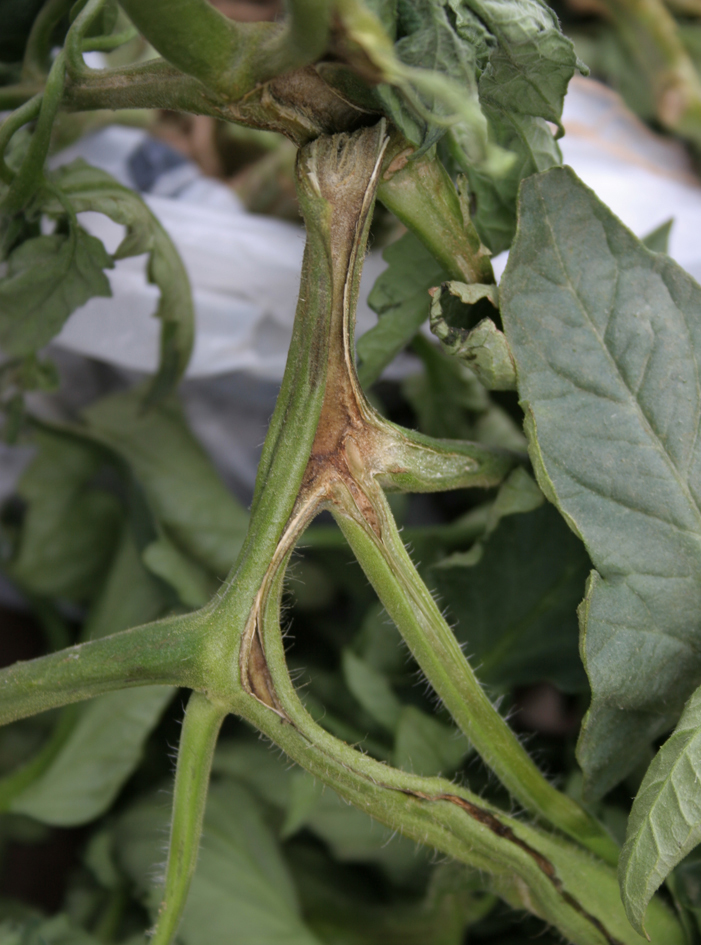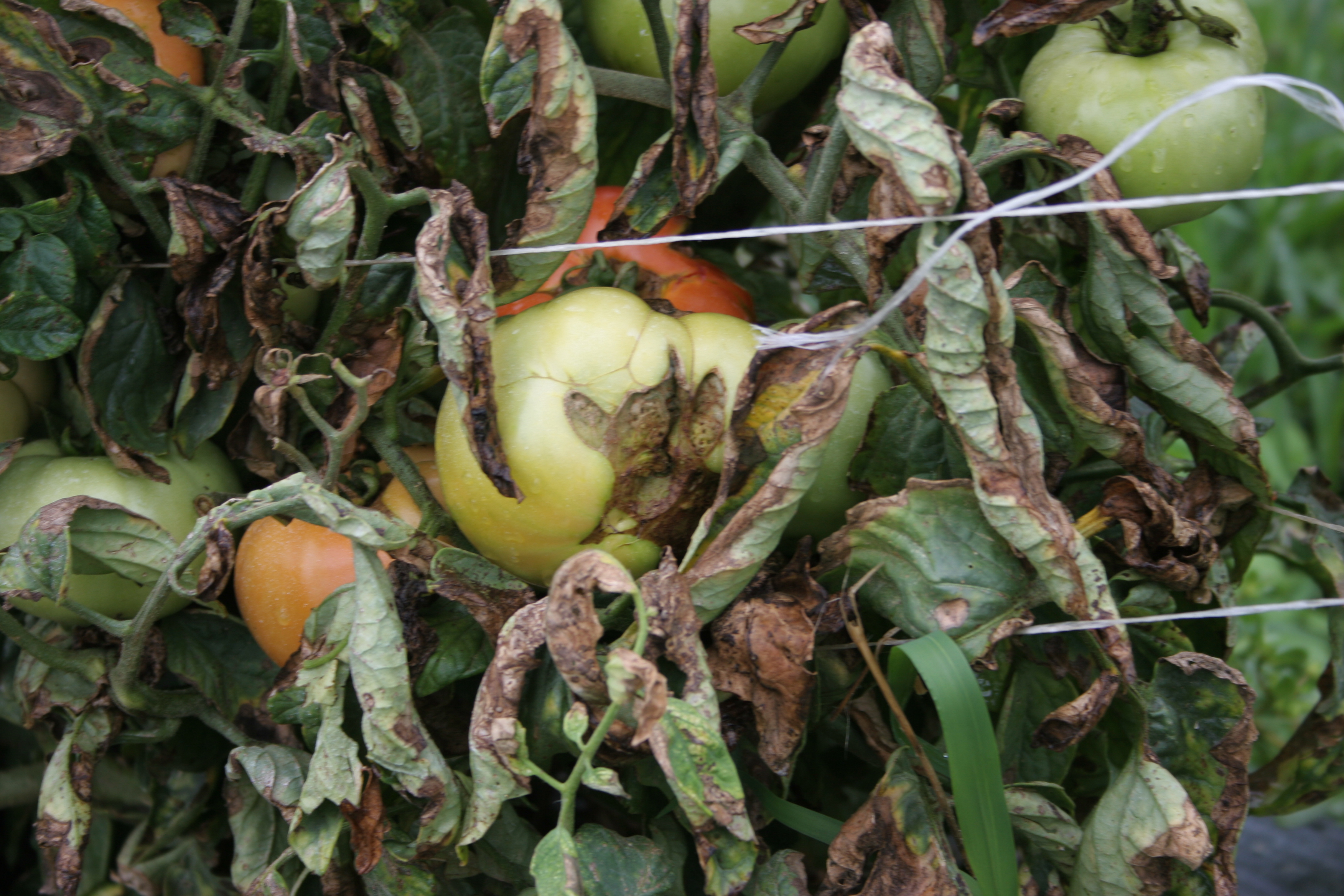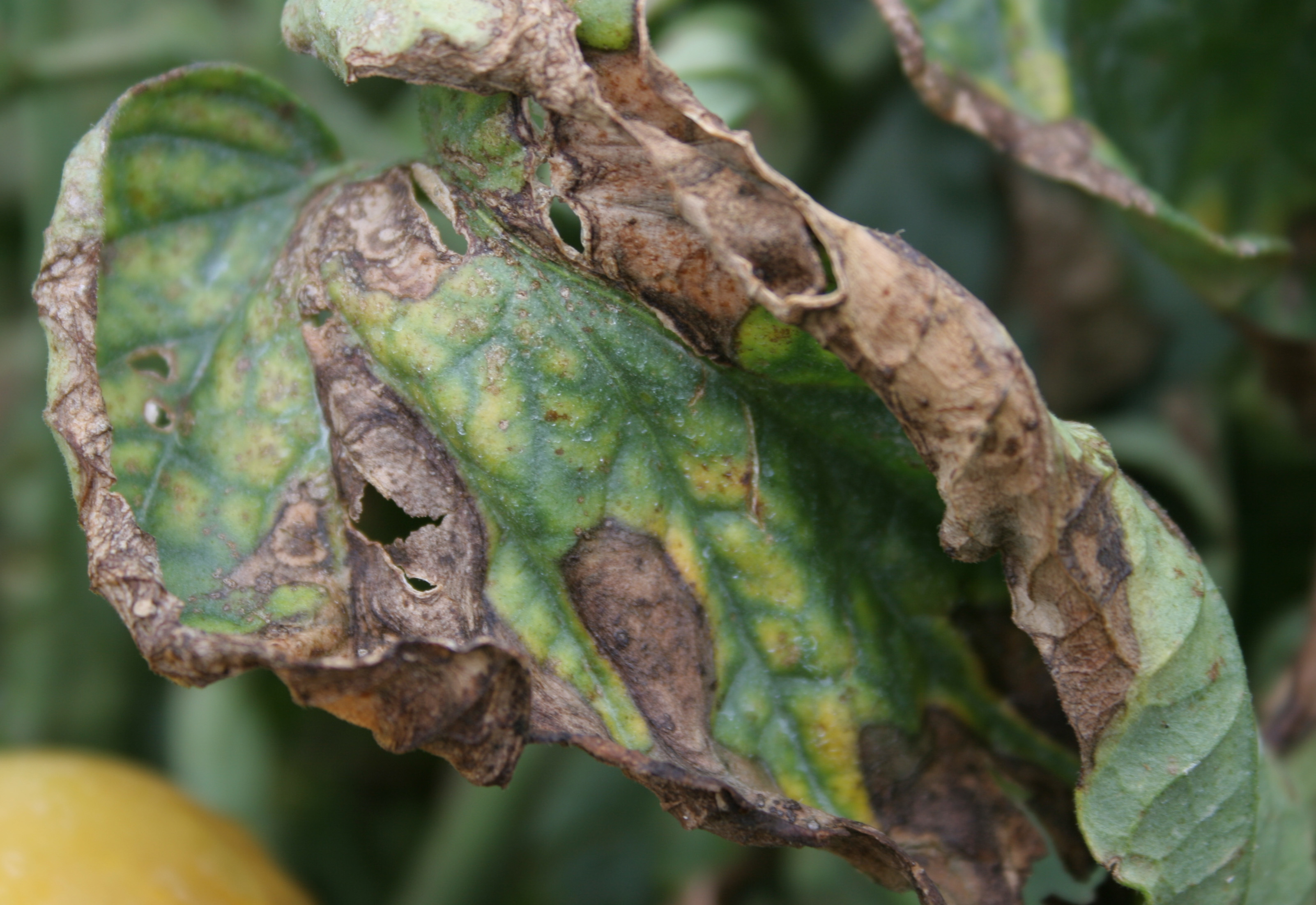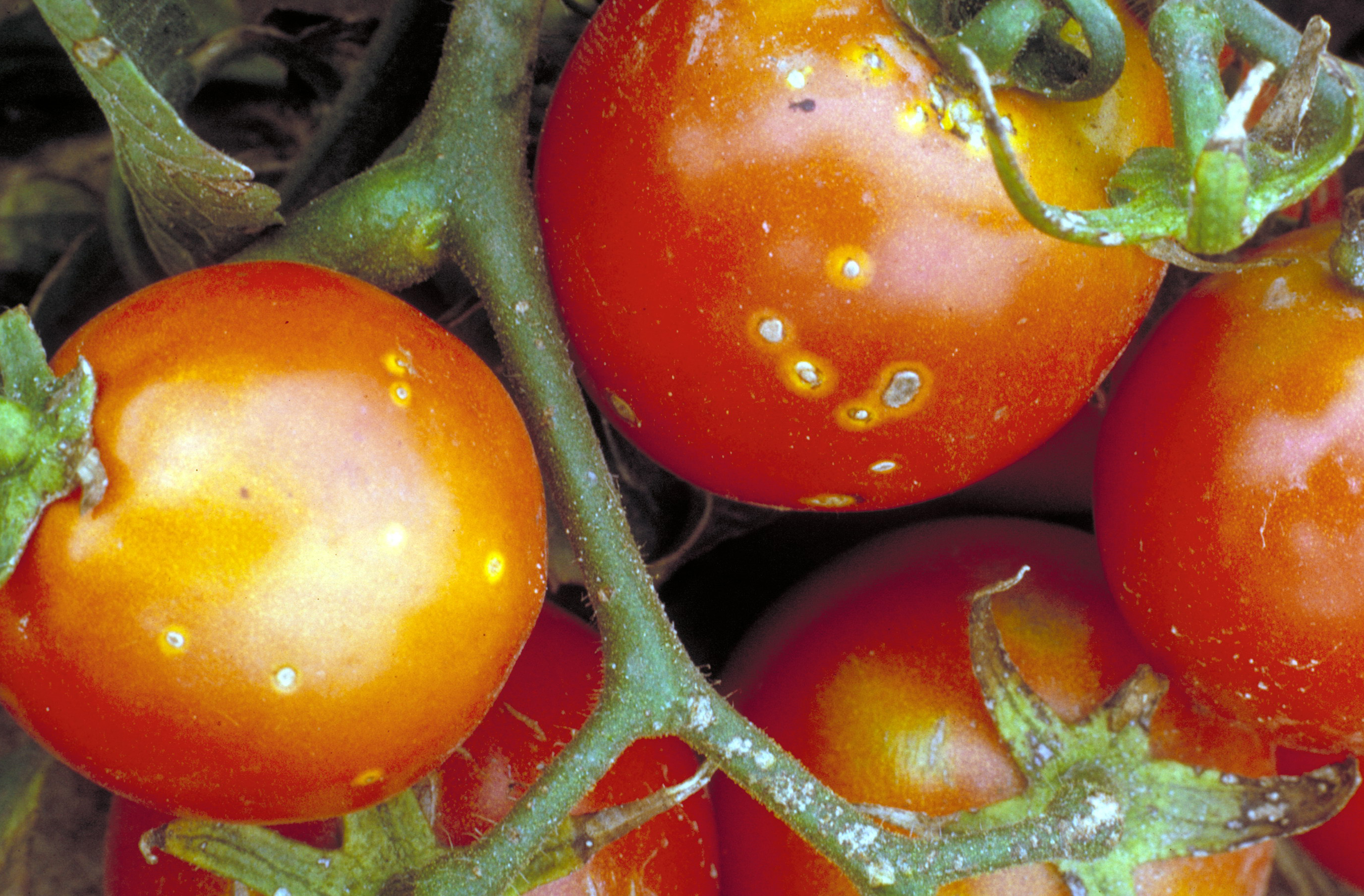Bacterial Canker of Tomato
Return to Diseases
Bacterial canker (Clavibacter michiganensis subsp. michiganensis) may occur on all aboveground plant parts. On mature plants, wilting is often the first symptom observed; later, infected stems split, resulting in open cankers. When stems are split lengthwise, the vascular system has a reddish-brown discoloration, and the pith may be grainy or pitted. Some infections can result in marginal browning or necrosis of older leaves, referred to as “firing.” Necrotic tissue may be surrounded with a yellow border, and affected leaves tend to curl upward. Infected seedlings may appear stunted and often wilt and die. On fruit, raised spots with a white margin, roughly 1⁄16 inch in diameter (called “bird’s eye”), may appear. This disease can be devastating in structures or fields. Warm temperatures and high humidity or rainfall favor disease.

Bacterial canker stem canker.
(Photo: UK Vegetable IPM Team)

Bacterial canker firing.
(Photo: Kenny Seebold, University of Kentucky)

Bacterial canker firing.
(Photo: Kenny Seebold, University of Kentucky)

Bacterial canker on fruit.
(Photo: Heinz USA, Bugwood.org)
Management:
- Plant pathogen-free seed and transplants
- Disinfect tools and implements
- Avoid overhead irrigation or working with plants when leaves are wet
- Promptly remove and destroy diseased plant material
- Rotate with non-host crops
- Destroy crop residues after harvest
- Deep plow to bury residual inoculum
